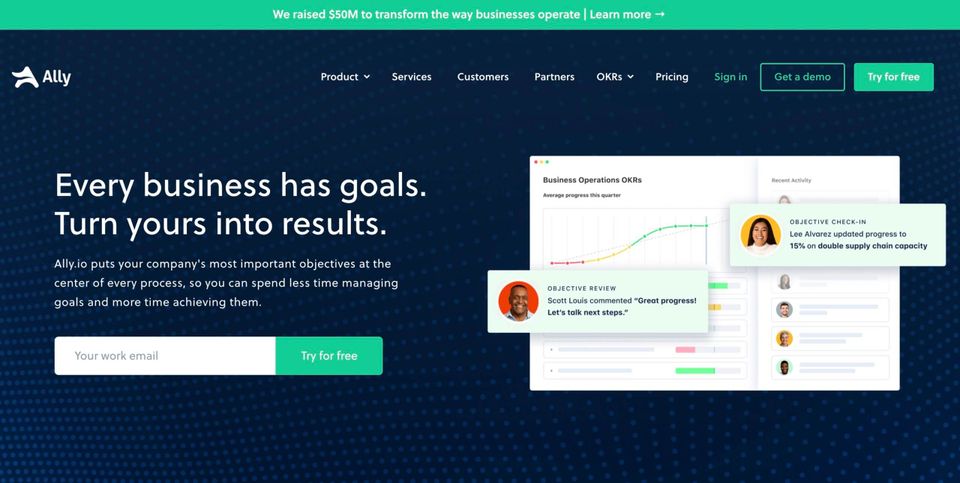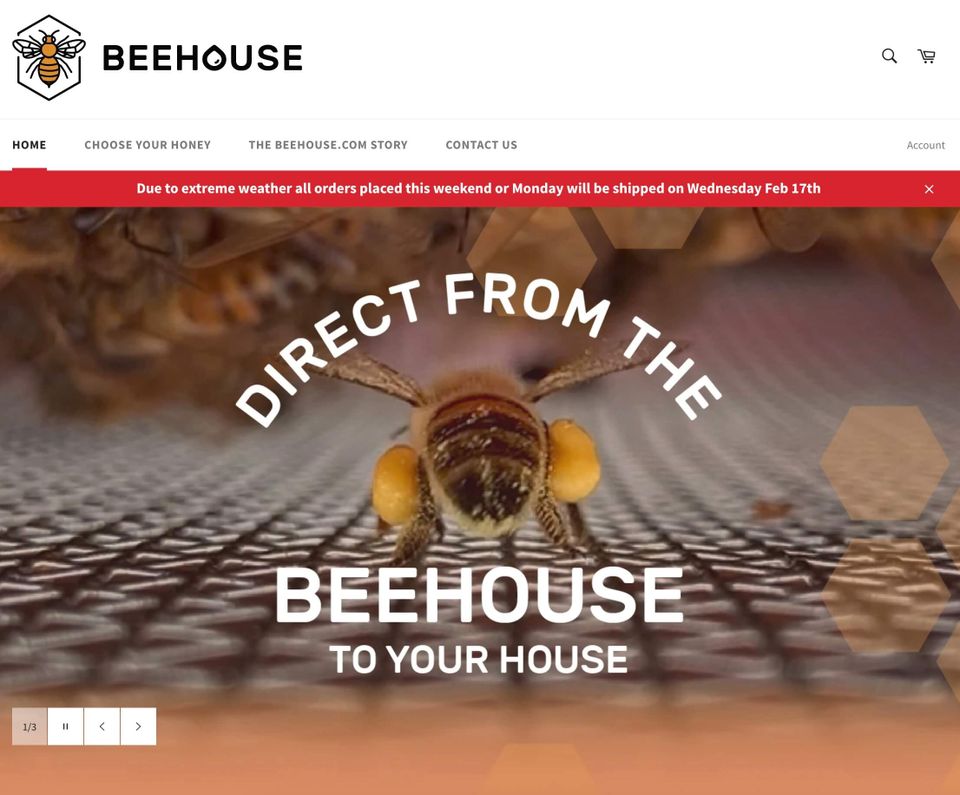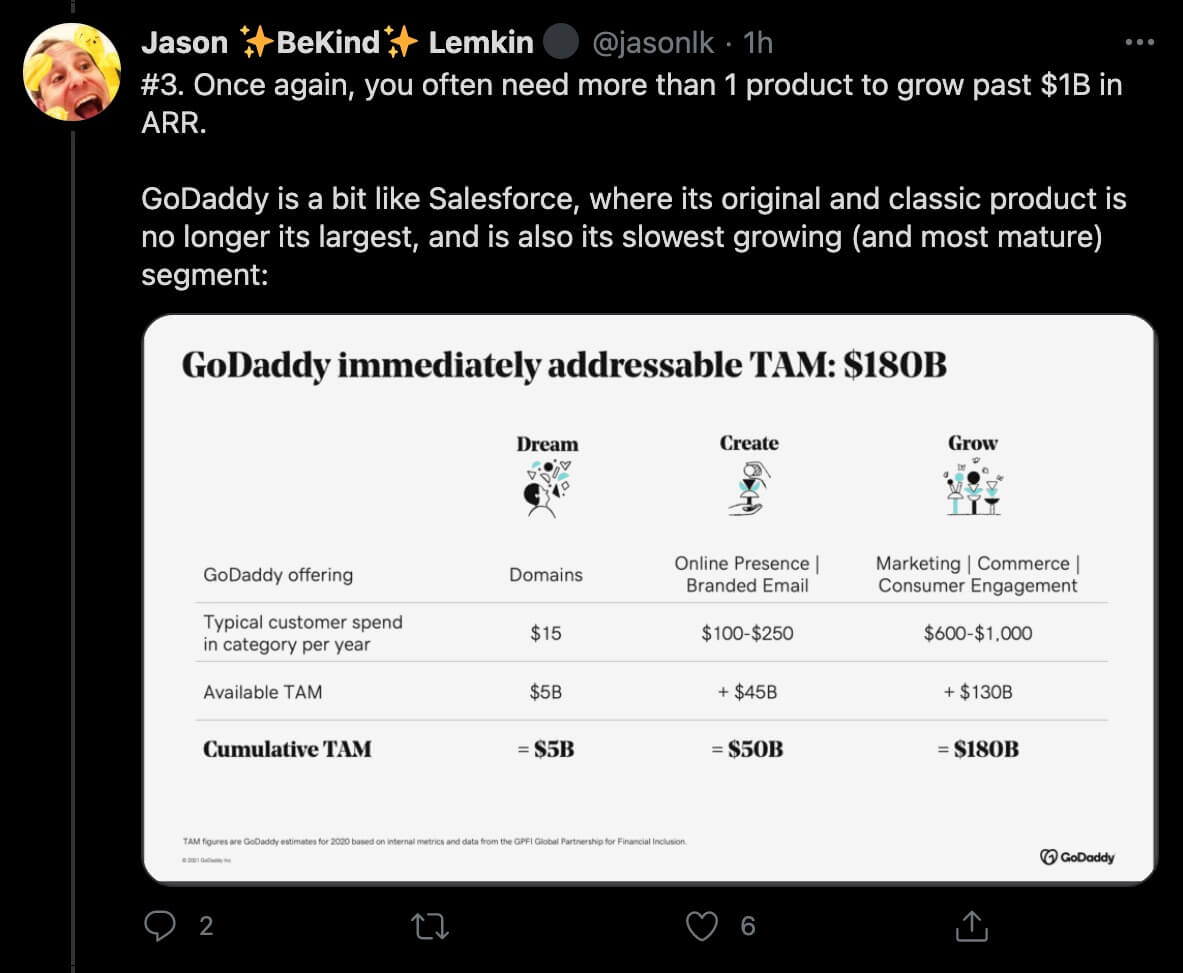Last week I shared a case study on building a brand on Kayaking.org and saw some really incredible feedback, so I’m back again this week with another case study. One of the things that I enjoy the most about building businesses is learning about different niches. The debt niche is a very lucrative one however suffers from an incredible number of very low-quality sites and scams. Every brand I build is something that I think we can make a real impact with and finding underserved niches is really part of the game.
There are plenty of niches online that have dominant players that own the search space. Take a look at televisions or electronics in general – Best Buy and Amazon are duking it out as are major brands like New Egg. If you want to make a meaningful brand in this space you better do something truly revolutionary or have a budget to go up against the big guys otherwise you’re probably just wasting your time. When I find a niche online the first thing I look at is who the category leaders are, and if they’re delivering the best customer experience possible. The debt space has a need, some of the top terms are dominated by low-quality sites that haven’t been updated in eons, I’m looking to change that!
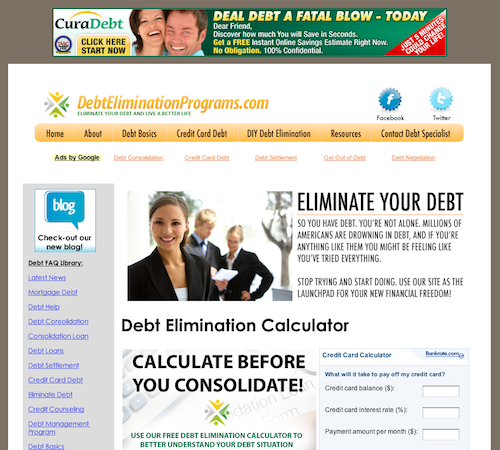
Debt elimination programs is one of the newest sites I’ve launched in the credit/debt niche and I think it will make a great case study over the coming months. First let’s look at where I am and then I’ll let you know what I’m planning to do.The first thing I did is had ten articles written for me, all focused on debt and the most popular related topics. This is usually a core that I like to start with so I know we have a basic information-base to build the brand on top of.
The issues that I’ve seen many new developers make is to stop here and assume that a ten page site will stand on its own. This is just the base and expecting to make a fortune just by building something like this is selling yourself a dream that will probably never come true…I won’t say ever because I’ve seen and still own some exceptions, but those are more like nice surprises than the norm.
Once the initial site was up I went on over to Twitter and Facebook and created social media accounts for the brand. I was able to add these to the header so that when people visit the site they have a way to connect with the brand via social media. Don’t feel bad if your social media accounts aren’t very active in the beginning, for me it’s about building the right business structure so I can create a real brand.
Initially I had a basic logo but I decided to have a better one designed and I’ve incorporated this into the Twitter account and will soon be adding it to the Facebook Page which we haven’t launched yet, it really just exists right now. Next I thought of one cool interactive feature we could add to make our site useful beyond simply providing information. I asked a few visitors that had sent me emails in the past what they’d like and debt calculator was the top request. My developers quickly found a cool calculator from Bankrate and our graphic designer put-together a great graphic that makes the calculator look more like part of our site rather than a disparate element.
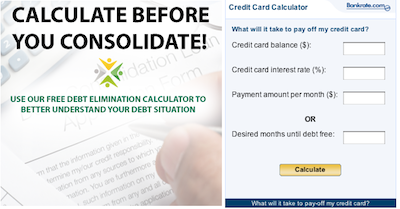
Finally, we’ve recently added a blog to the site to allow an easier way to add content and become a bit more of a voice in the community. Now here is the most important thing to understand – this is the base, the very beginning, this is the product that we start with. For so many people they expect this to be the end, the finished product, when nothing could be further from the truth. Think of any website that you visit daily and what it would be like if it was never updated, never added new features, and never tried to innovate. A brand starts with a good site, good content, interactive features, social media account, a blog, and potentially even a few more elements. It is what you do from this point that will make you a category leader in the space.
So what’s ahead for this brand? I’ll give a quick summary below and then keep you updated through these weekly case studies so you can follow the progress and see exactly how I take each step. Please understand I am simply sharing what I am doing and not trying to be an advisor telling you all the right things to do – every niche is different and it is the lessons you learn with each brand that allow you to create something truly special.
- Begin using the social media accounts daily – I have a social media manager that runs a majority of my social media accounts outside of those for me specifically. Each brand doesn’t take infinite resources to promote thanks to Twitter and Facebook. To start I’ll have them spend five minutes in the morning and five minutes in the evening sharing articles and blog posts from our site, and retweeting related information from trusted sources in the space. I’ve found that by helping promote reliable people on Twitter you can also in turn build your own brand and your following.
- Add new blog posts three times a week – to get the blog started I’ll be having 12 articles/month posted on it, spread-out so that three posts are added each week. What’s my cost? I pay $12 for each post so this will cost me $144/month in content. This is where a majority of my money is spent when I’m building a brand and is, in my opinion, the best way you could spent money on your business.
- Getting the blog posts out into the world – we’ll be using social media along with partnerships we are creating now to get these blog posts out into the world and generating backlinks and traffic to our site.
- Add more interactive features – the debt calculator we have on the site now is a good start, but there’s a lot more we plan to do when it comes to creating interactive features that will make our site an incredibly useful resource.
- Partnerships – every week I am reaching-out to leaders in the space and building relationships. Initially I don’t focus on trying to make money with other people in the space, instead I just try to share ideas and discuss how we can make the space better. I think that learning from your partners is far more valuable in the beginning than finding a million ways to make money off of them. An example of this would be talking to a debt elimination company and asking them how they reach their customers, what works for them, what doesn’t, and what they are looking for in a site that promotes them. Getting to know your customer is some of the most valuable work you can do.
These are the basics we’ll be implementing over the next few months. We do have specific ranking, traffic, and revenue goals, but I’m already at over 1200 words for this post so I’ll have to save this for a future case study. Stay-tuned next Wednesday for another case study. As always I’d love to hear from you! Comment and let your voice be heard!

